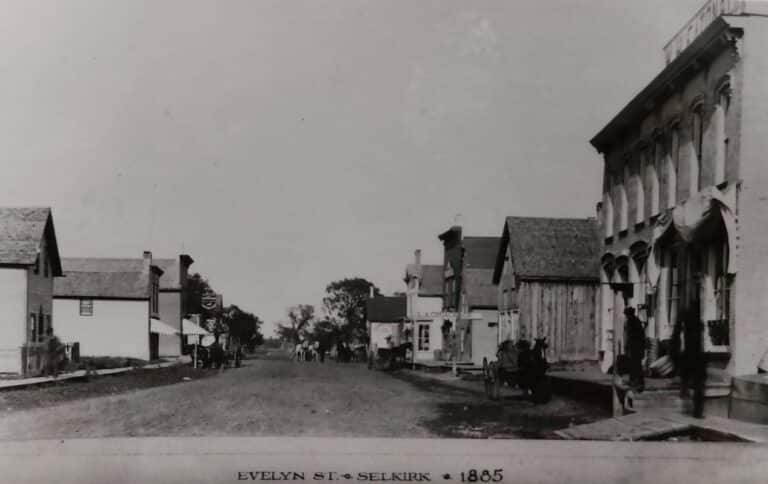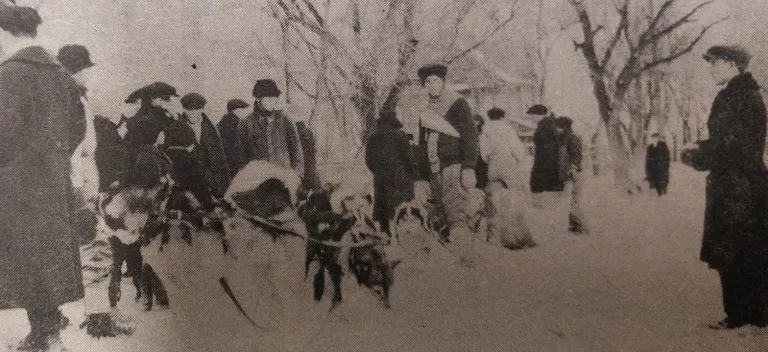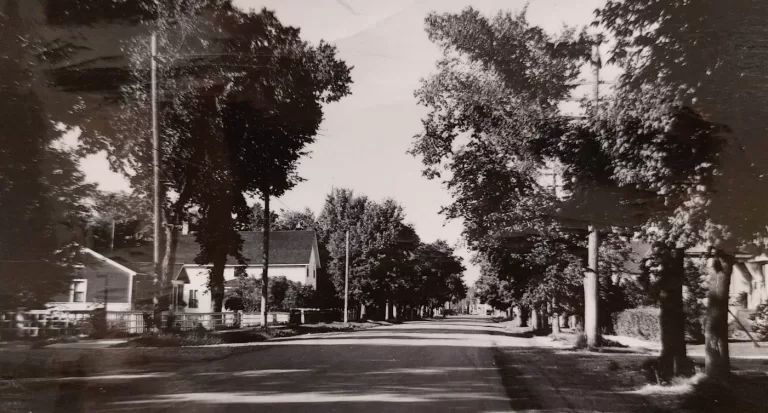Selkirk's First Commercial Street
The name Eveline was given to the muddy trail behind the busy waterfront in 1875. Eveline was most likely the wife of inn-keeper and entrepreneur, John Greig.
Before the creation of Selkirk, the “inner trail”, as it had been known for 50 years, led along the riverbank to Lower Fort Garry. The fur trade post was the centre of economic and social activity.
In the late 1870’s and early 1880’s, men from timber camps, fishing stations, construction sites and railway gangs established a busy tent city on Selkirk’s waterfront. Families of migrants from Ontario arrived in the area every day and needed housing, clothing, food, fuel and tools.
A string of temporary “hotels”, retail shops, and stalls belonging to peddlers and tradesmen sprang up. Over time, these disappeared and were replaced by log or frame buildings and even a wooden sidewalk. After the fires that swept Selkirk in the 1890’s, many of the old wooden buildings were replaced by brick structures.
When Selkirk built its branch rail line, more new businesses began. Families like the Reids, Hookers, Gibbs, Eatons, Heaps, Moodys and Gilhulys began their enterprises on or near Eveline in the early 1880’s.
South Eveline became a high-priced residential street. Huge houses were constructed along it and on the avenues between Eveline and the “outer trail” which by then was called Main. The little town grew slowly, but steadily. By 1900, Selkirk had almost two thousand citizens.
A group of businessmen realized that a modern transportation system to Winnipeg might be profitable. Eveline was chosen as the route for an electric street railway – the first rural street railway in the West!
A Street Railway
A street car line ran along Eveline beginning in 1904.
It ran from Taylor Avenue along Eveline. Then at Heap avenue, it joined Main Street. It followed “the outer trail” until it reached Luxton Avenue in Winnipeg. About 5 round trips were made every day. One way was 40 cents. The street cars operated until 1937, when they were replaced by buses. The ticket office was at 360 Eveline – the old Eaton’s Store.
Eveline Street Collection





Sources
Selkirk the First Hundred Years, Barry Potyondi

